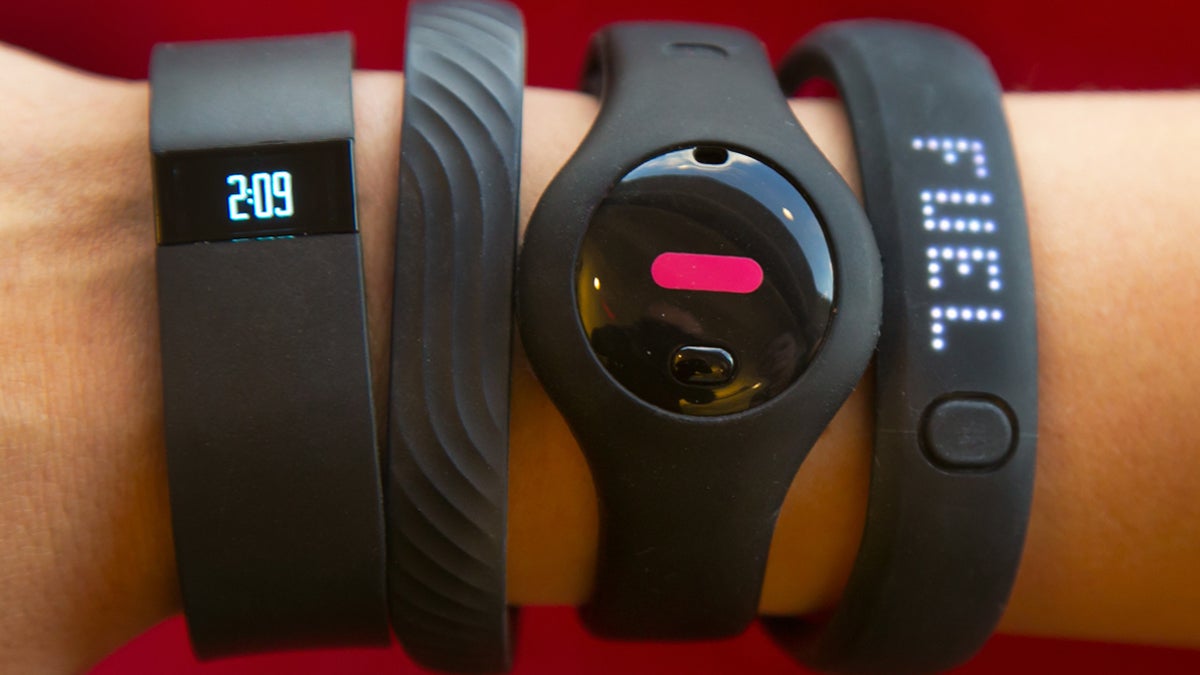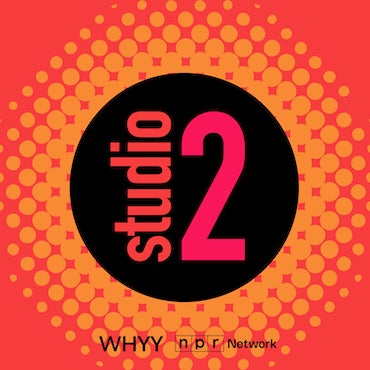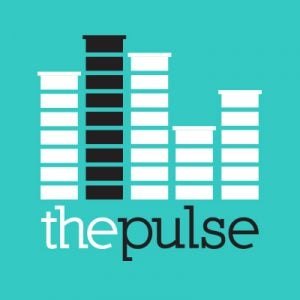In a sea of mobile health devices, how do we know which ones are most effective?
Listen
Four fitness trackers from left to right
The number of digital health applications is exploding, but who’s keeping tabs on the safety and effectiveness of all the options?
Digital health is the big umbrella term—that includes talking to a nurse on Skype, or logging into a patient portal to schedule a doctor’s visit. Within that field, there’s an explosion in mobile health.
Back in 2012, researchers counted up more than 40,000 mobile health applications. Today’s options include wearable biosensors—such as Fitbit and FuelBand—and an array of on-the-go and handheld devices to monitor sleep, pulse and exercise levels.
“The good news is there are lots of apps, the bad news is there isn’t much direction on what to do with what is out there,” said Michelle Rogers, who teaches healthcare informatics at Drexel University.
Most mobile health applications are designed for the “worried well”—those of us who don’t have serious health problems but are looking for ways to improve our health.
Many people have no problem with constant monitoring in the name of wellness. One Wi-Fi device auto-tweets your weight out to followers each time you step on the bathroom scale.
There are a few videos from YouTube critics and Consumer Reports that sometimes review a new line of products, but there’s no such thing as Yelp for mobile health devices. Rogers said she wishes more health professionals would weigh-in to say which applications they like, and which apps they trust.
Linda Fleisher and colleagues at the Children’s Hospital of Philadelphia are studying digital health applications to make sure they’re easy to navigate—for people at different literacy levels, or for those who don’t speak English well.
At a recent summit on mobile health at Drexel Law School, Fleisher showed the picture of a colleague who was among many consumers who bought a Fitbit activity tracker and ended up with an angry, red rash on her wrist.
Fitbit recalled the device.
“There’s great potential here,” Fleisher said. While innovation is important, she said, the goal is to make sure that people are safe in the end.
She encourages consumers to do their own research before buying a mobile app.
“We need to take the time to evaluate them on our own to make sure that what we are using is something that’s really going to be effective,” Fleisher said.
Besides, she added, the motivation that consumers get from a wearable biosensor may be short-lived; lots of us quickly tire of our pricey wellness toys.
While most mobile devices let you monitor yourself, a different set of mobile-health tools is sold to help your doctor keep tabs on you. For example, there are now at-home blood-pressure monitors that take a reading automatically, then email that information to your physician.
“We don’t know that that’s any better than if you were to do it yourself and write it a little book that comes with the blood pressure cuff, and then when you go to the doctor you take that book with you,” Rogers said.
She wonders whether doctors are even interested in all the information that patients are compiling on their own.
The U.S. Food and Drug Administration is limiting its regulation to mobile health devices with a higher risk of health harm. But mobile health policy watcher Nicholas Terry says its sometimes unclear which products require government oversight.
Terry, a professor at Indiana University’s School of Law, says the FDA sent one of its “It has come to our attention” letters to Biosense Technologies, the maker of the uChek device. Regulators pointed out that the urinalysis dipsticks used in the device are approved–but only if read by a person–not a mobile phone.
So far, the FDA has approved about 100 mobile medical devices, which leaves thousands of consumer-oriented health applications without government oversight.
Some non-profit, national health groups are drafting safety and health guidelines, Fleisher said, and hoping that product makers will establish their own safety standards.
The promise and reality are still far apart, but Nicholas Terry says mobile health could become a disruption that could shake up traditional health care.
Right now when a patient leaves one health facility to go to another, the handoffs are very bad, Terry said; a patient’s health data often does not follow him to the next destination. But Terry said, “synch is the new care coordination.”
“One of the things that our modern handheld devices seem particularly good at is synchronization, making data available everywhere you are,” he said.
WHYY is your source for fact-based, in-depth journalism and information. As a nonprofit organization, we rely on financial support from readers like you. Please give today.



